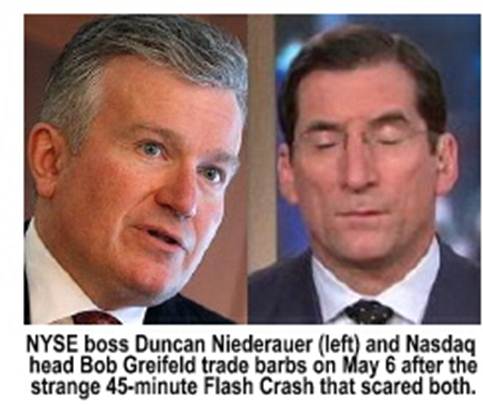HFT shrinks spreads and provides liquidity. You’ve heard it all a thousand times, and more. It’s good for you; take your Soma! Honestly, today when investors hear those words, they are wise to the propaganda, and they discount it appropriately. The only “defense” thrown up by the for-profit exchanges’ catering to HFT at each and every turn, is that they have done so for our collective good. Because of that platitude!
But what if it weren’t true? I mean like really not true; like what if an academic study came out and stuff? What if such a study came out and demonstrated that HFT did NOT shrink spreads after all, because when you take trade sizes into account, effective spreads are in fact quite similar to the past!
We introduce into evidence: The Impact of High Frequency Trading on Stock Market Liquidity Measures, by Soohun Kim and Dermot Murphy. They have examined a somewhat liquid instrument, the S&P 500 ETF, SPY during different time periods. Using four independent models
Glosten and Harris (1988), Sadka (2006), Huang and Stoll (1997), and Madhavan, Richardson and Roomans (1997)
that each calculate the effective spread, all four models underestimate the spreads from 2007-2009 by 41 – 46%. Stated differently, spreads between 1997 and 2009 are actually quite similar when you account for size of trades.
Here are some nice tidbits from the study, although we encourage you to read it, as it is very readable right up until the letters and equations and sigmas and symbol thingies:
“In 1997-2006, the average size of a trade is 2,700 shares (with a standard deviation of 15,000 shares), while in 2007-2009, it is only 400 shares [we insert that the average trade size is now under 200 shares] (with a standard deviation of 6,600 shares). At the same time, the average number of consecutive buys or sells has increased from four to twelve. This corroborates our story that it is becoming increasingly common for traders to split their large orders into many smaller orders, in order to minimize price impact.”
“The spread is underestimated because empirical market microstructure models only identify the price impact of a single trade, when we should be identifying the cumulative price impact of many small trades”
“We see that, for the SPY, the average number of seconds between trades has steadily decreased over time, from 67.5 seconds in 1997 to 0.1 seconds in 2009. This decrease is likely because of the sheer increase in the number of transactions over time: on average, there were about 200 buy and sell transactions, each, in 1997, while there were about 250,000 in 2009. The average volume, in shares, has increased from 400,000 shares to 130.0 million shares.”
“If we collapse consecutive buy or sell orders into a single transaction by summing over volume, we find that little has changed from the early to late sample periods – the size, variation and distribution of these collapsed trades stays somewhat stable over time.”
So, umm yeah. Maybe all along we should have been focusing, not on the size changes in spreads, but rather the size changes of their noses, instead.
Source:
Themis Trading Blog
January 19, 2012



What's been said:
Discussions found on the web: